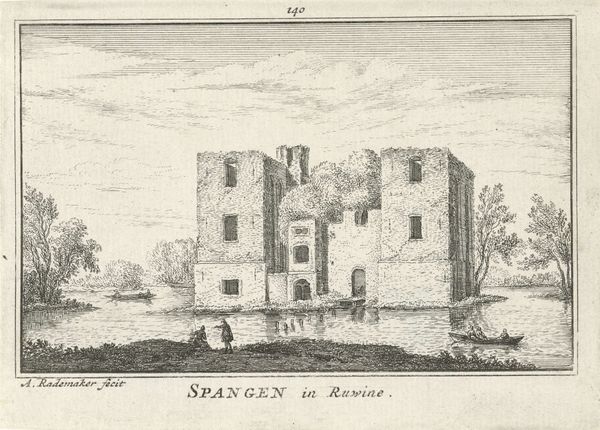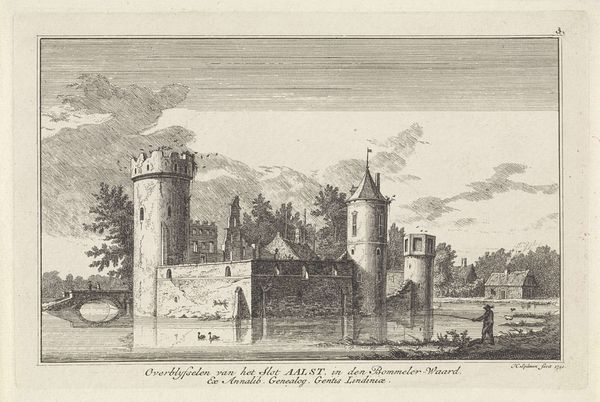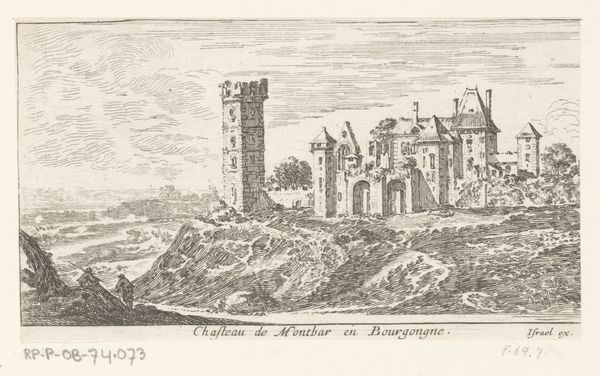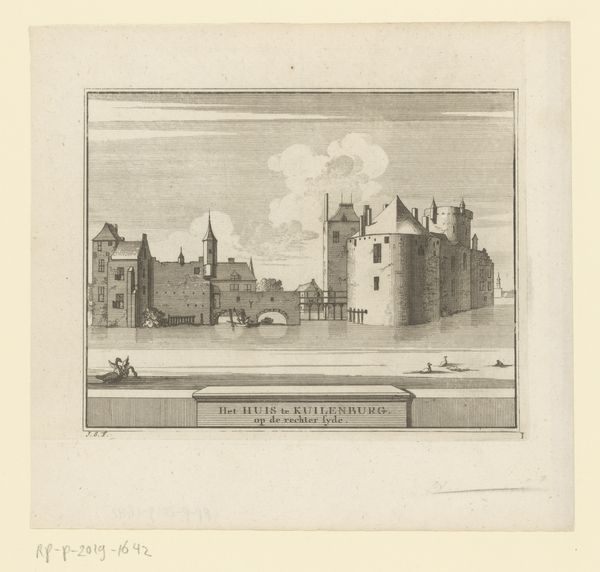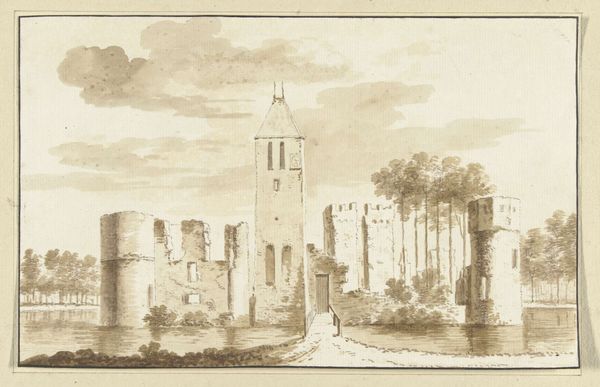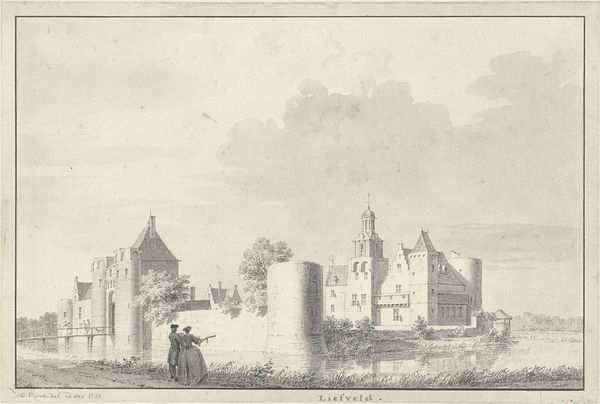
print, engraving, architecture
#
baroque
# print
#
landscape
#
house
#
engraving
#
architecture
Dimensions: height 80 mm, width 115 mm
Copyright: Rijks Museum: Open Domain
Editor: Here we have Abraham Rademaker's "View of the Ruins of Spangen Castle," an engraving dating from the early 18th century. The delicate lines create a powerful sense of decay. What do you see in this image, looking at it with your expert eye? Curator: Ruins, particularly those depicted with such detail, often speak to the cyclical nature of power and time. Beyond just depicting a crumbling castle, Rademaker engages with cultural memory, prompting us to reflect on what has been lost and what remains. What do you notice about the people in the foreground? Editor: They seem so small and ordinary, almost indifferent to the monumental ruins behind them. Curator: Exactly! They emphasize the scale of the ruin and their presence marks the continuities between then and now, between history and the everyday. What do you make of the architecture itself, the castle elements? Editor: There's such a mix. Some parts look almost intact, while others are crumbling away. It’s a compelling contrast. I am curious if this contrast might be a political statement as well. Curator: It absolutely could be, with visual language to convey meaning. It’s also essential to understand this print within the context of the Dutch Golden Age and its aftermath, perhaps contemplating on shifts in political or social power. The iconography extends into Baroque themes such as transience and mortality, prompting deep reflection about one’s legacy, our mark in history. Do you find the architecture gives it some personality? Editor: Now that I'm considering that, it does a little. It's such a powerful meditation on time and change. I never would have picked up on so much without your insight into the cultural memory imbued within the images. Curator: And that cultural memory ensures its resonance centuries later. The interplay between observer and the observed continues the art.
Comments
No comments
Be the first to comment and join the conversation on the ultimate creative platform.

